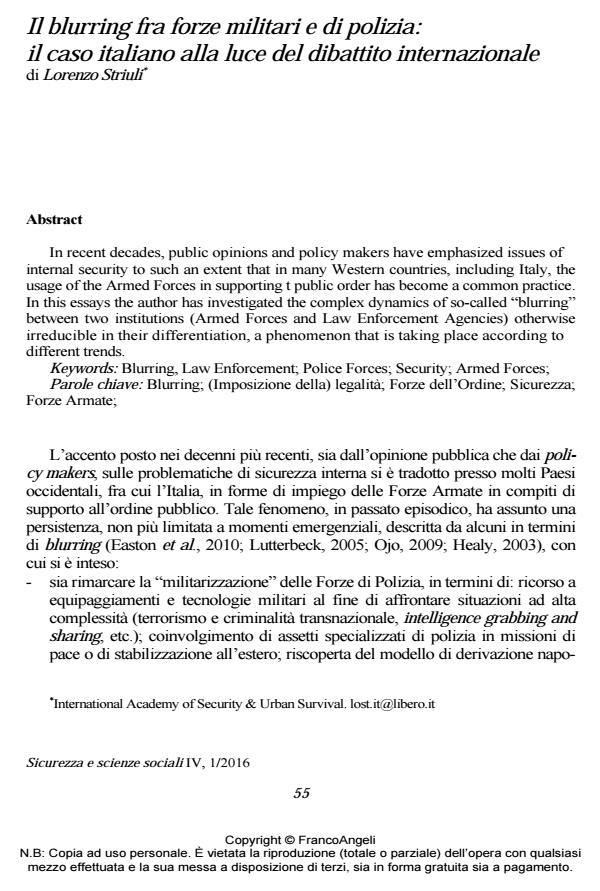Il blurring fra forze militari e di polizia: il caso italiano alla luce del dibattito internazionale
Journal title SICUREZZA E SCIENZE SOCIALI
Author/s Lorenzo Striuli
Publishing Year 2016 Issue 2016/1
Language Italian Pages 17 P. 55-71 File size 257 KB
DOI 10.3280/SISS2016-001005
DOI is like a bar code for intellectual property: to have more infomation
click here
Below, you can see the article first page
If you want to buy this article in PDF format, you can do it, following the instructions to buy download credits

FrancoAngeli is member of Publishers International Linking Association, Inc (PILA), a not-for-profit association which run the CrossRef service enabling links to and from online scholarly content.
In recent decades, public opinions and policy makers have emphasized issues of internal security to such an extent that in many Western countries, including Italy, the usage of the Armed Forces in supporting t public order has become a common practice. In this essays the author has investigated the complex dynamics of so-called "blurring" between two institutions (Armed Forces and Law Enforcement Agencies) otherwise irreducible in their differentiation, a phenomenon that is taking place according to different trends.
Keywords: Blurring, Law Enforcement; Police Forces; Security; Armed Forces;
- The Impact of Military Policing on Armed Forces: The Case of Italy Matteo Mazziotti di Celso, in Armed Forces & Society /2025 pp.690
DOI: 10.1177/0095327X231225771 - Legitimating Violence: Military Operations Within Brazilian Borders David P. Succi Junior, pp.13 (ISBN:978-3-031-95213-5)
Lorenzo Striuli, Il blurring fra forze militari e di polizia: il caso italiano alla luce del dibattito internazionale in "SICUREZZA E SCIENZE SOCIALI" 1/2016, pp 55-71, DOI: 10.3280/SISS2016-001005